Sasha Waltz: "I try to listen to my surroundings, to mirror the world around me, to perceive a time that stimulates images and awakens the imagination."
Since the death of Pina Bausch, Sasha Waltz, who will celebrate her 60th birthday on March 8th this year, has been one of Germany's most important choreographers. She is sometimes described not only as Bausch's successor but also as Germany's main export in the field of dance. Sasha Waltz is one of the most important choreographers in the world. She creates with her company Sasha Waltz & Guests in Berlin. In every part of her artistic development she has managed to surprise and surpass herself. Although she doesn't have a permanent stage on which to perform her troupe and is a kind of theatrical homeless person, she can be at home everywhere. From world-famous venues to alternative places where she creates just between the chairs. She describes herself as always looking for her own spaces and architecture where she would not be a mere dancer, but could co-create the place as a choreographer. I have been working with Sasha Waltz as a dancer for twenty years, and it is not only in her relationship to space that she is extraordinarily close to me.
We meet after the rehearsal of your new choreography. How is the rehearsal going and what will the performance be about? How was the creation process?
It's Beethoven's Symphony No. 7. I worked on it during the pandemic, when we couldn't perform. It started with a live broadcast from Delphi, Greece, in collaboration with the european broadcaster ARTE and conductor Teodor Currentzis. We created in the ruins of the old temple of Delphi and worked out the 2nd and 4th movements. Afterwards I felt the need to complete the work and put it on in a theatre. So now I am finishing the 1st and 3rd movements of this symphony. As a man interested in the new society, Beethoven was disillusioned at the time. He expected revolutionary changes, a transformation, but with Napoleon came more disappointments. And this particular work, the 7th Symphony, was composed after Napoleon’s defeat.
The music is about the loss of illusion and utopia. The second movement even sounds a bit like a funeral march. In contrast, the first movement is very joyful, happy, full of life, and then the third movement is again very strong. The fourth movement is more about struggle, it has a strong energy. Never to give up.
This music is quite a challenge. My choreography is abstract, but emotionally charged and reflecting the different energies of each movement of the symphony.
And to add another layer, I am combining Beethoven’s music with a contemporary electronic composition: The piece »Freiheit/Extasis« (freedom/ecstasy) by Diego Noguera, a composer from Chile. He created it directly with us in the studio. Its theme is freedom. What is individual freedom and how does it relate to society. How can you be free inside but still be connected to the outside, to the rules and restricitons of society. The piece is electronic and contemporary, but it has a reference to Beethoven's composition and its musical harmonies.
Over the years, I can say that in your work, connecting art and creating bridges is very important. In the new production we can hear old and new music again. What about the research of movement, the creation of dance?
Every kind of music has its own field, how it speaks to the people. The body reacts to music in different ways. And it also awakens inspiration and imagination. Music and dance are interconnected. I like Baroque music, romantic works like from Berlioz or Wagner, jazz, experimental or new classical music, or electronic sound. With its flow, its breath, Baroque music is a very vivid and joyful partner to dance, and even cruel and tragic content in the libretto might be transformed to another level of perception by the Baroque score. On the other hand, electronic music opens up a completely different universe that I like to enter and follow, because there is huge freedom and possibility for improvisation. When I work together with the dancers, we try to explore qualities, themes, characters, phantasies, we try to describe them verbally, to understand each other and to create a common vocabulary, its own language for each piece. The essence of the choreography lies deep down in a physical feeling and thoughts, from me as well as from all the participating dancers and creators.
The challenge is to translate the inner states, emotions and thoughts evoked by music into physical form. This is primarily influenced by my initial idea. In the creation process, the individuality of the dancer I am working with enters into it. I want the expression to be authentic. Together we create a broad vocabulary from which the choreography emerges.
I use a slightly different principle when I create to contemporary music. Working with Toshio Hosokawa's compositions is different from working with Baroque opera, for example. The individuality and the protagonists still play a role, but the composition itself and the handling of the space are completely different. A different musical style simply has different needs and specifics.
As I thought about this encounter, I realized that there are several milestones in your life. You're 60, your company turns 30 this year, your daughter is 20. I'm similar. I've worked with you for 20 years, I'm about to turn 40... Are there any anniversaries that are important to you?
The numbers are striking, it's true. I was studying at 20, travelling a lot, dancing with different people and gaining experience. When I started the company, I wanted to create something, I was ready to build my own artistic world and bring all the experience together I had gained up to that point. Now, at 60, I'm starting to reflect a lot more. Choosing even more carefully what I really want to do, what I want to say, what I haven't done yet. You can't say that making art gets easier with age, because it's always challenging.
How did you found your company?
By the time I came to Berlin, I wanted to settle down. »Travelogue I - Twenty to Eight« was a key production for the company. That was the piece I wanted to tour with, not just do a premiere. And gradually the need to create our own company grew. The new ensemble brought a clear organization, order, a sense of continuity. I think that at that time I was ready for such a step, I wanted to build something around me, to shape my world. It was also important to meet Jochen Sandig, my later husband. We met shortly before the premiere of »Travelogue I - Twenty to Eight« and then founded the company together in 1993.
That was the beginning. How are things now?
We started inviting new choreographers like Andrew Schneider in 2019 to create for the company. I supported young artists before, but then I put the project on hold for a while. Now I feel again that I want other choreographers or directors to work with the company and the dancers to meet different artists and create a varied repertoire. I'm also thinking about doing shared evenings.
We are also working on my archive. I've done a lot of work in my life, now I'd like to look at and revise my previous work. My company has a repertoire, but there are pieces that I don't want to show anymore because they belong to the past and I feel I want to close an artistic chapter. At the same time, I would not like them to be completely forgotten. This is where the archive steps in.
What life turning point, impulse or encounter gave you the impetus to become a choreographer? And where do you find inspiration for your projects?
As a child I was very active and I went to a dance class. It wasn't a ballet school, although we did have ballet classes. There was also an emphasis on improvisation. The first real impulse to become a dancer though was probably the contact improvisation workshop I took in Freiburg at the age of 16. I was involved in a lot of improvisational techniques at that time and focused on American postmodern dance.
Contact improvisation was very rare in choreography at that time, so I was excited and curious about this discovery. That's also why I decided to continue my studies in Amsterdam, at the School for New Dance Development, because there was a strong connection to America, there were a lot of dancers and musicians there, and I got in touch with contemporary music and composers who subsequently wrote original scores for my first works. So the American experimental scene was a great source of inspiration and influence for me. Furthermore, places inspire me, much more than people themselves. For example Berlin, which after the fall of the wall brought many new vibrations, freedom, changes, big empty spaces. New opportunities also came from these challenges and possibilities, new opportunities, undiscovered places, atmosphere and people who came from different corners of the world. Also, the collaboration with other artists, dancers, musicians, designers had a big impact on me.
You could say that you are always looking for new ways. What is the most important thing for you in art?
I was talking about people, cities, spaces, but I'm also inspired by the buildings themselves. When you rehearse in them and explore them, drawing on their history, it all gives the work a new context and space that becomes part of the creation.
The creative process is important to me. It's long, demanding and unexpected, but that's what's great about it. With the dancers and the whole team, we talk a lot, we rehearse, we search. Sometimes I try to stick firmly to the path I've laid out, but sometimes you take a step into the unknown that takes us into completely new realms. The moment I get to go somewhere I didn't expect, I'm really happy. I try to listen to my surroundings, to mirror the world around me, to take in the times, which stimulates images and awakens the imagination. I read the newspapers, I follow what's going on, what issues society is dealing with, what times we live in. I try to find a timeless vocabulary that everyone can understand. A language that people of different cultures can relate to. I surge for a mutual understanding or communication I want to achieve. It’s not answering questions, it can stay as questions lingering in the air, mysterious and like a riddle that everybody engages with. Each of my works is different, different from the previous and the following ones. It reflects my present, our time and the people I met and I allow myself to let them influence me.
If you could go back in time, would you become a choreographer again? Or is there another dream profession you'd like to pursue?
If I wasn't who I am and I could be a different person? I love music, I love to play and maybe I would love to work as a composer, that would be fantastic. But I think it's very good that I started dancing. I am a physical person and it keeps me sane to move energy in space. I would also imagine to be a conductor, maybe… What I miss now, as I primarily choreograph, is dancing though. I feel that for myself and my life, the opportunity to dance actively is crucial. Although one of my earliest dreams as a child was to become a visual artist, just by myself in my studio. Somehow I am that, but I work with people and bodies… (Laughs)
You have two beautiful children, how aware are you that dance has brought something different into their lives, because both of your children dance.
From an early age they participated in rehearsals and I allowed them to be on stage. For example, Lázsló performed in Dido & Aeneas and also Sophia in Medea, both children danced in The Rite of Spring as well. The company is a wonderful theatre family that my children have become part of. They learned about the music, the lyrics, they began to appreciate the content, the different cultures, but they also got to know their own bodies physically and learned to be fearless in their interactions with other people. I think all kids struggle with body issues that get worse with puberty. Whether it's shyness, feeling ugly, different, excluded. Through dance, you can suddenly become someone else through your body. I see the positive impact of dance not only on my children, but on all those who have participated in various educational projects by me and my company. I can see how they benefit from it. Dance helps you find your own way to your body, the space you move in, the way you live, how you move in space, how you make decisions and how you orientate.
I think dance can heal, in dance you work with your energy. That doesn't mean that every dancer has to be happy. But you already have the tool to heal yourself.
How and where do you choose the dancers for the company? I know you haven't held normal auditions for several years.
I don't like the selection process. I don't need to see all the good and even better dancers in the world, I'm not interested in creating with „the best“. I want to work with human beings and every body is unique, beautiful. I am interested by the personality, I try to find a connection with the dancer, to feel that something can be growing... The whole process is very intuitive. Of course it is necessary that dancers can dance well, I need to know they can master certain techniques and skills. I like them to be educated and have knowledge. But in the end, it's all about chemistry. Sometimes all I need to do is spend a few hours with a person in the room and I know. The interplay in the group is also important to me, because every piece I've ever made works with a divers group of international dancers. It's a completely new organism each time.
Sometimes, dancers from an original cast need to be recast; of course, the generational change in a company like Sasha Waltz & Guests is important. So you have to invest in it emotionally and intellectually to rejuvenate and transmit the knowledge, as well as keeping mature dancers with you as long as it is an artistically fruitful collaboration.
Let's slowly dance our way to the conclusion. How do you spend your free time, how do you rest?
Reading, walking in nature helps me, although I don't have much time for it. It also helps me just to lie down, take care of my body, eat well. In the summer I spend time in the garden, have my hands deep in the earth. I enjoy swimming, doing yoga, going to exhibitions, travelling, playing chess, drinking tea, meditating, meeting friends, spending time with my family and my husband, watching the sea, looking at the waves, the seasons, living…
If you could invite a famous person (living or dead) to celebrate your birthday with you, who would it be?
Buster Keaton or Charlie Chaplin? I don't know, I was just wondering. I think Charlie must have been very charming and enchanting.
Soon the audience in the Czech Republic will have the opportunity to see one of your latest choreographies, Symphony MMXX. And it will be at the National Theatre in Brno. What is your relationship with the Czech Republic? Do you have any good memories?
We were in Prague in the early 1990s with »Travelogue I - Twenty to Eight« and then quite often, so I have a lot of great memories. But we were always in Prague, I don't know any other cities. So now, I'm really looking forward to Brno. I'm also very happy that we'll be performing Symphony MMXX. It's a rich, intense creation, I believe it's extremely powerful. It carries many aspects of my work of the last few years, and there is much that is beautiful and uplifting, as well as questioning, reflecting on resistance movements, war and transformations, and injustices. I'm curious to see what audiences in the Czech Republic have to say about it and I'm looking forward to hearing their voices.
Sasha Waltz (*1963) is a choreographer, dancer and director. After studying at the School of New Dance Development in Amsterdam, she joined the postmodern oriented New York dance scene, working closely with other art forms. In 1986 and 1987 she danced with the New York companies Pooh Kaye, Yoshiko Chuma & School of Hard Knocks and Lisa Kraus & Dancers. She chose the German capital Berlin as the center of her activities, where she tried out new choreographic approaches in infrastructures she developed herself. Together with Jochen Sandig, she founded the dance company Sasha Waltz & Guests in 1993 and Sophiensæle in 1996, a venue for dance that is now a centre of the independent dance and theatre scene in Germany and beyond. From 2000-2004 she was one of the directors of the Schaubühne am Lehniner Platz. In the following years, she applied the language and strategies of contemporary dance to revive and explore historical and new operas and ballets and brought the genre of choreographic opera to life. Sasha Waltz is dedicated to sharing and teaching dance knowledge and promoting dance as a means of social and socio-political communication. In 2016 she founded the event format "ZUHÖREN" with which she opened a "third space" for art and politics. She has expanded the concept of "Dialogue" to include dance responses to architecture, where the audience is invited to behave as an equal part of the choreographic action. In 2011 she received the Order of Merit of the Federal Republic of Germany for her outstanding achievements. She has been a member of the Berlin Academy of Arts since June 2013. In 2021, Sasha Waltz was appointed "Commandeur de l'ordre des Arts et des Lettres" by the French Ministry of Culture.




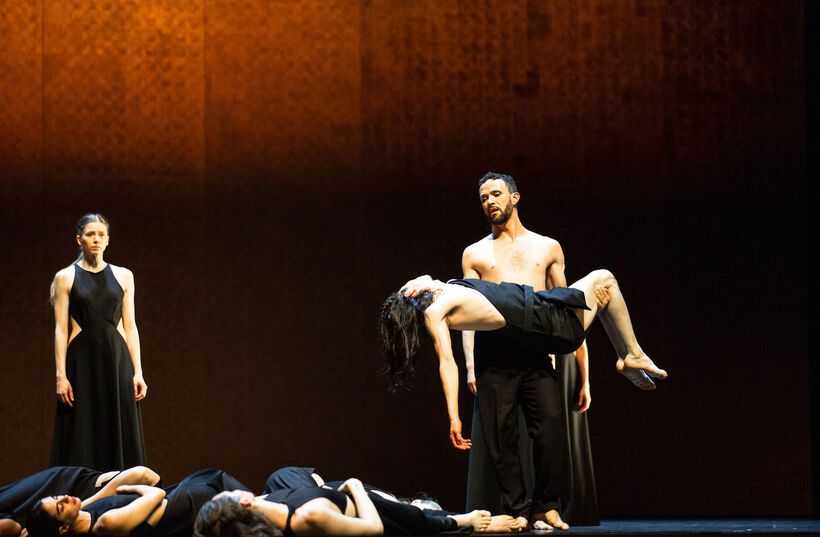
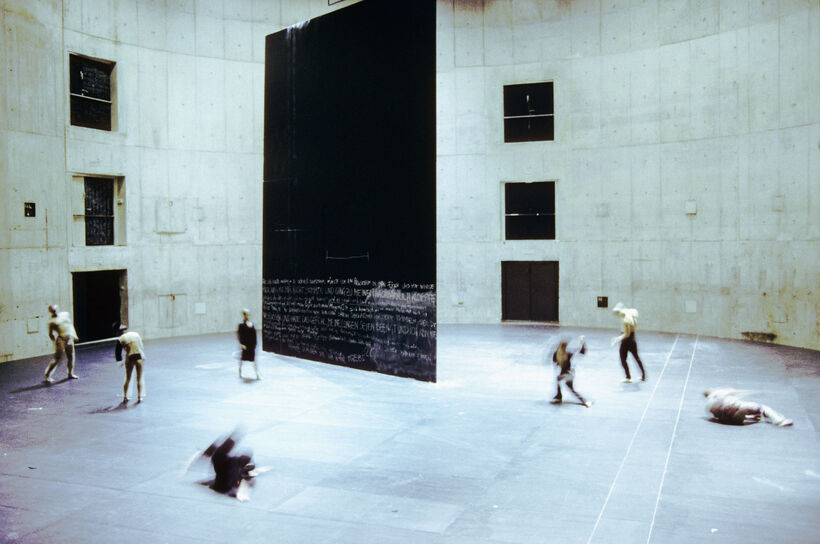Bernd Uhlig.jpg)
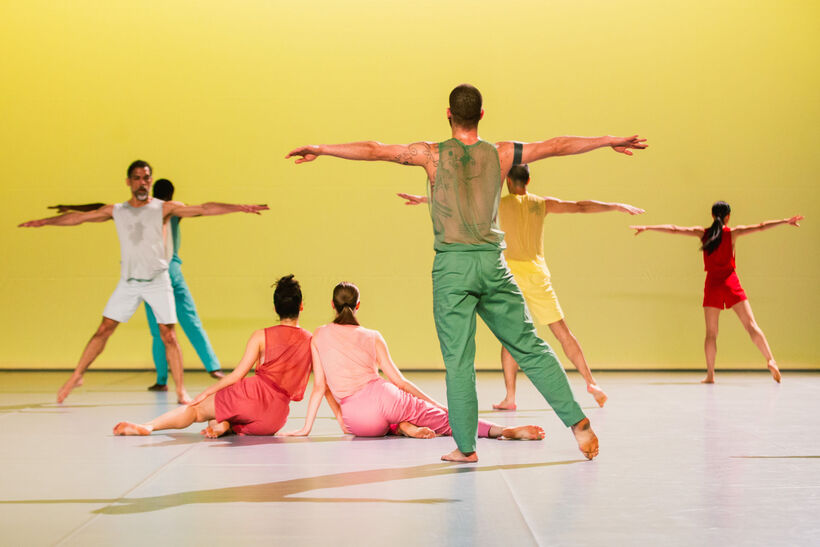
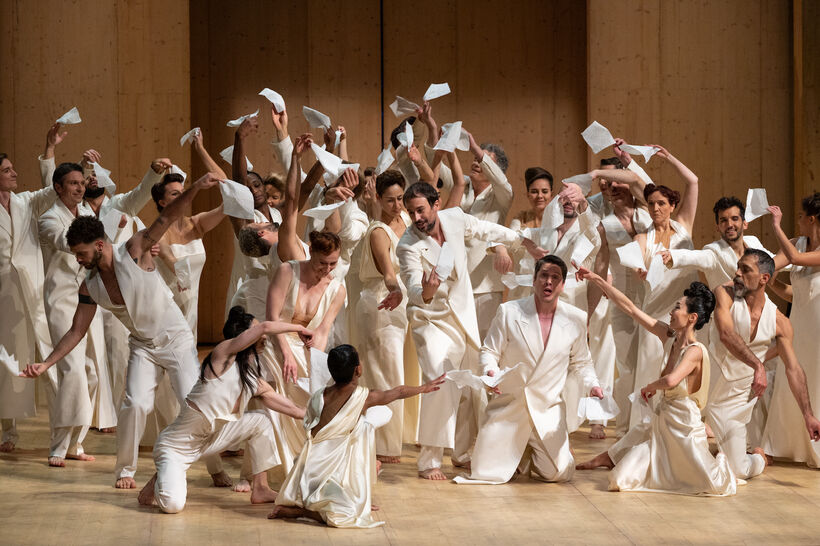
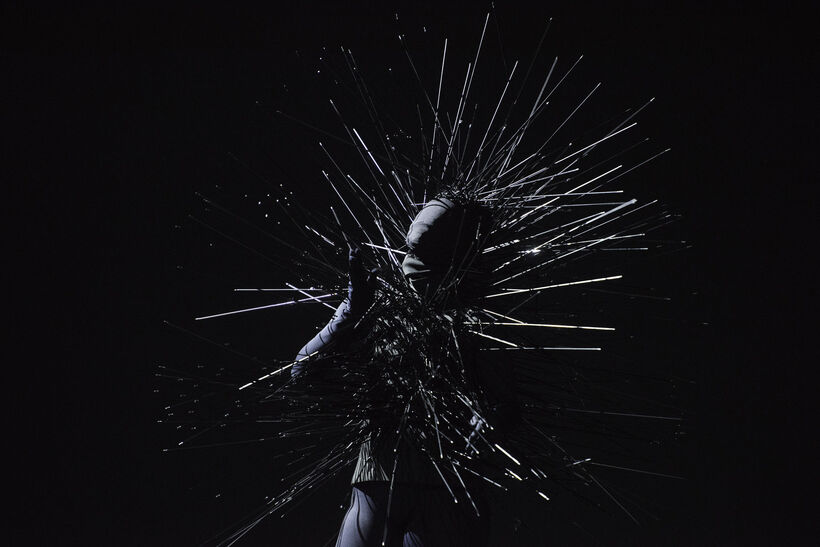
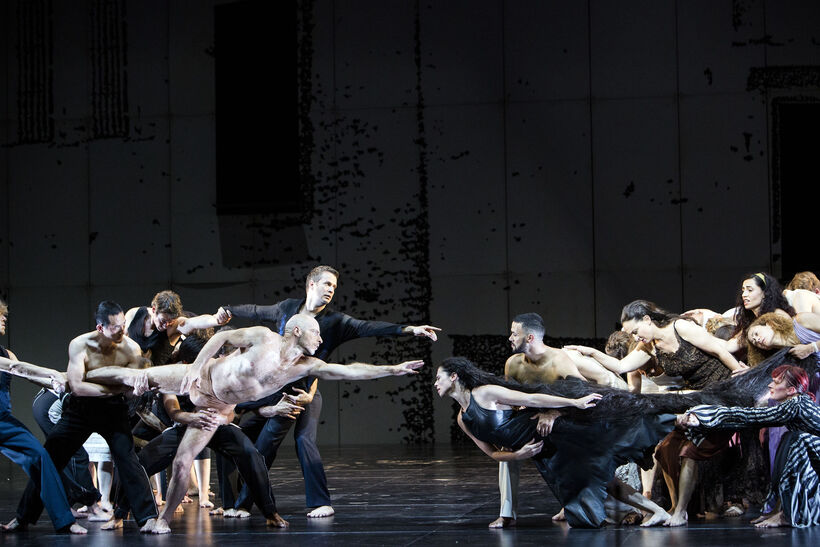_Virgis Puodziunas, Yael Schnell, Ensemble © Bernd Uhlig.jpg)